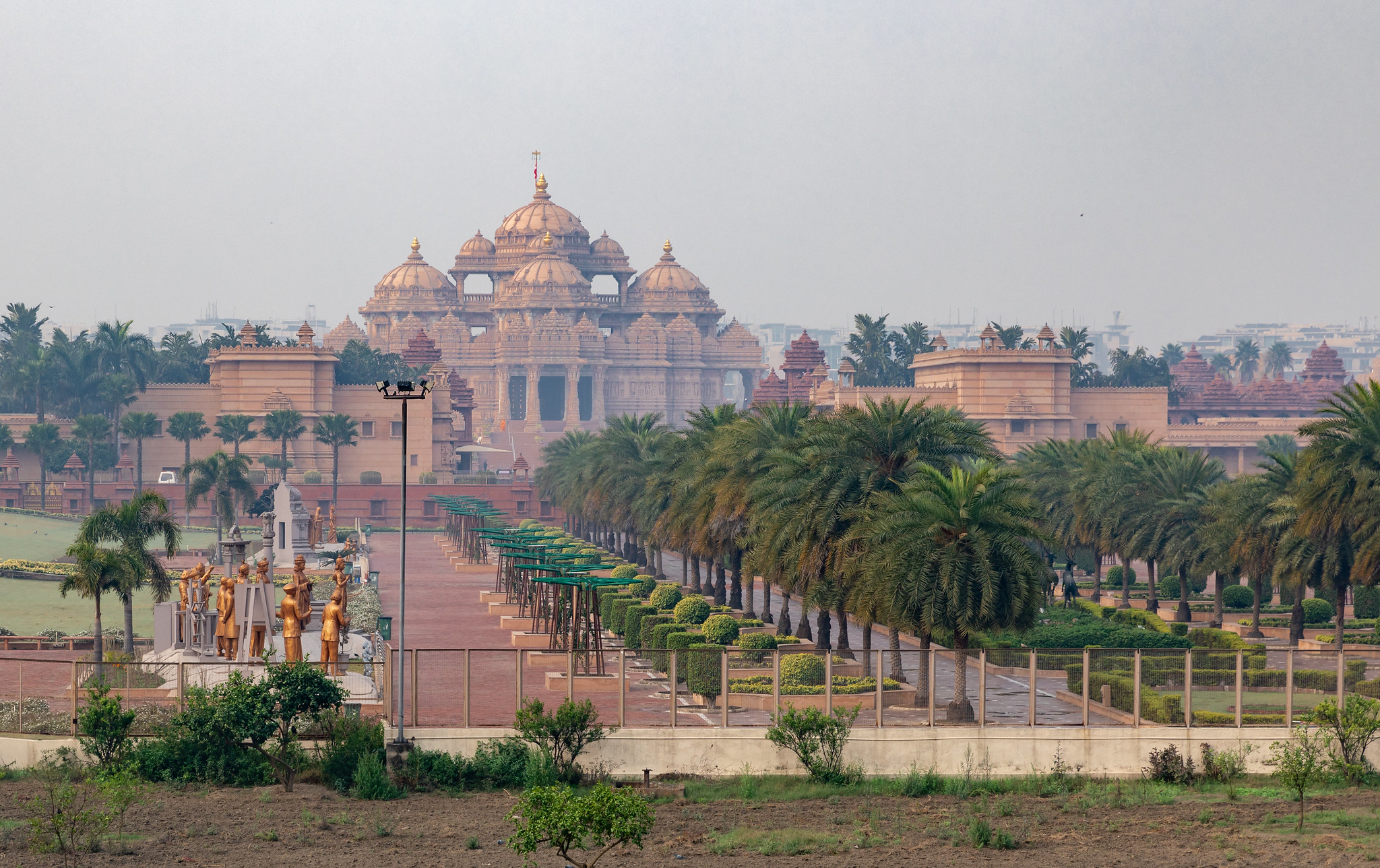Humayun’s Tomb is a magnificent mausoleum located in Delhi, India, built in the 16th century. Commissioned by Empress Bega Begum in 1569-70, it was the first garden-tomb on the Indian subcontinent and served as a major inspiration for the Taj Mahal. The tomb houses the remains of the Mughal Emperor Humayun and showcases a perfect blend of Persian and Indian architectural styles. Constructed using red sandstone and white marble, the structure features a central dome surrounded by smaller chambers and is set within a meticulously designed Char Bagh garden. Recognized as a UNESCO World Heritage Site in 1993, Humayun’s Tomb stands as a testament to Mughal architecture and continues to be a popular tourist attraction in Delhi.
Humayun’s Tomb stands as a testament to the architectural brilliance of the Mughal era, captivating visitors with its intricate design and historical significance. Located in Delhi, India, this magnificent structure is not just a final resting place for the second Mughal Emperor, Humayun, but also a masterpiece that set the stage for future Mughal architecture, including the iconic Taj Mahal.
As you approach the tomb, you’re immediately struck by its imposing presence. The structure sits on a raised platform, surrounded by meticulously manicured gardens that follow the classic Persian char bagh (four-garden) style. This layout, with its perfect symmetry and flowing water channels, is more than just aesthetically pleasing – it’s a representation of paradise as described in Islamic texts.
The tomb itself is a marvel of red sandstone and white marble, rising in a series of arches and domes that seem to defy gravity. The central dome, an impressive 42 meters high, is flanked by smaller chattris (domed pavilions) that add to the structure’s grandeur. It’s hard not to be awestruck by the sheer scale and precision of the construction, especially when you consider it was built in the 16th century.
But it’s the details that truly set Humayun’s Tomb apart. As you move closer, you’ll notice the intricate geometric patterns and calligraphy adorning the walls and arches. These aren’t just decorative elements – they’re a reflection of Islamic art and philosophy, with each pattern and inscription carrying deep symbolic meaning.
The use of different materials throughout the structure is another fascinating aspect. The combination of red sandstone and white marble creates a striking visual contrast, while also serving a practical purpose. The marble, being a cooler material, was used more extensively in areas where people would gather or rest.
Stepping inside the tomb, you’re enveloped in a sense of reverence and tranquility. The interior is surprisingly simple compared to the ornate exterior, focusing attention on the central cenotaph. However, the real burial chamber lies below, in a technique that would be replicated in later Mughal tombs.
What’s particularly interesting about Humayun’s Tomb is its blend of architectural styles. While primarily Persian in design, it also incorporates elements of Indian architecture, creating a unique Indo-Islamic style that would come to define Mughal architecture. This fusion is evident in everything from the materials used to the decorative techniques employed.
The tomb’s influence extends far beyond its immediate surroundings. It served as a prototype for later Mughal architecture, most notably the Taj Mahal. Many of the architectural and decorative elements you see here were refined and perfected in subsequent structures, making Humayun’s Tomb a crucial link in the evolution of Mughal architecture.
Despite its age, Humayun’s Tomb has stood the test of time remarkably well. Recent restoration efforts have brought back much of its original splendor, allowing visitors to experience the tomb much as it would have appeared centuries ago. It’s a testament to the skill of the original craftsmen and the enduring appeal of Mughal architecture.
As you leave Humayun’s Tomb, you can’t help but feel a sense of wonder at the vision and skill that went into creating such a magnificent structure. It’s more than just a tomb – it’s a work of art, a piece of history, and a symbol of a golden age of architecture. Whether you’re an architecture enthusiast, a history buff, or simply someone who appreciates beauty, Humayun’s Tomb is a must-visit destination that will leave you in awe of human creativity and craftsmanship.
Humayun’s Tomb stands as a magnificent testament to Mughal architecture and cultural heritage in India. Built in the 16th century, this grand mausoleum set a precedent for later Mughal structures, including the iconic Taj Mahal. Its innovative design, featuring a central dome, intricate geometric patterns, and lush gardens, exemplifies the fusion of Persian and Indian architectural styles. The tomb not only serves as the final resting place of Emperor Humayun but also symbolizes the power and artistic vision of the Mughal Empire. Today, Humayun’s Tomb remains a UNESCO World Heritage Site, attracting visitors from around the globe and continuing to inspire admiration for its historical significance and timeless beauty.

